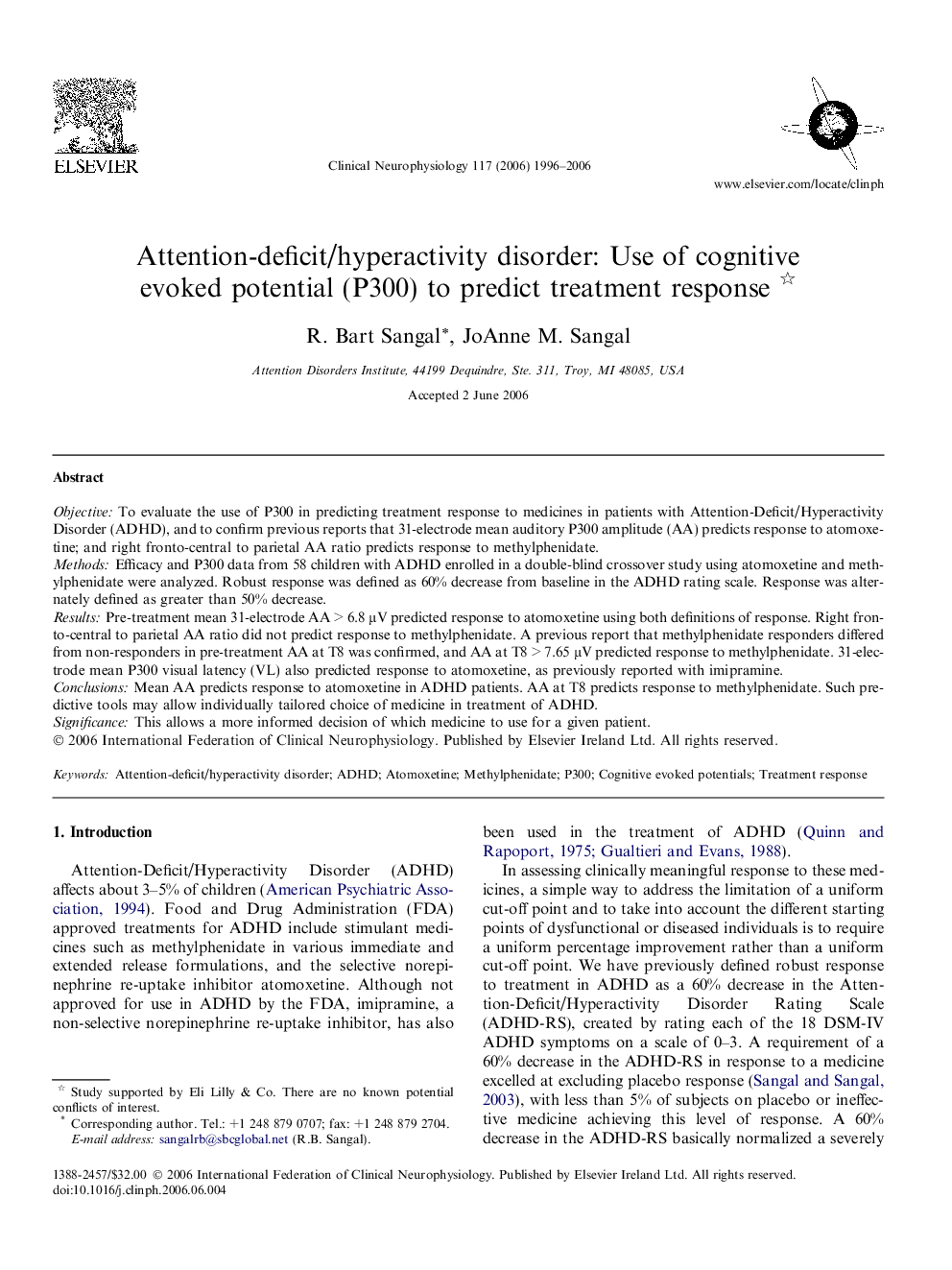| Article ID | Journal | Published Year | Pages | File Type |
|---|---|---|---|---|
| 3047813 | Clinical Neurophysiology | 2006 | 11 Pages |
ObjectiveTo evaluate the use of P300 in predicting treatment response to medicines in patients with Attention-Deficit/Hyperactivity Disorder (ADHD), and to confirm previous reports that 31-electrode mean auditory P300 amplitude (AA) predicts response to atomoxetine; and right fronto-central to parietal AA ratio predicts response to methylphenidate.MethodsEfficacy and P300 data from 58 children with ADHD enrolled in a double-blind crossover study using atomoxetine and methylphenidate were analyzed. Robust response was defined as 60% decrease from baseline in the ADHD rating scale. Response was alternately defined as greater than 50% decrease.ResultsPre-treatment mean 31-electrode AA > 6.8 μV predicted response to atomoxetine using both definitions of response. Right fronto-central to parietal AA ratio did not predict response to methylphenidate. A previous report that methylphenidate responders differed from non-responders in pre-treatment AA at T8 was confirmed, and AA at T8 > 7.65 μV predicted response to methylphenidate. 31-electrode mean P300 visual latency (VL) also predicted response to atomoxetine, as previously reported with imipramine.ConclusionsMean AA predicts response to atomoxetine in ADHD patients. AA at T8 predicts response to methylphenidate. Such predictive tools may allow individually tailored choice of medicine in treatment of ADHD.SignificanceThis allows a more informed decision of which medicine to use for a given patient.
